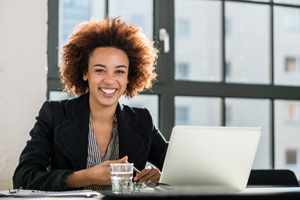Modular Mining’s DISPATCH Fleet Management System optimizes further down the value chain at large South African coal mine.
A large open-cut coal mine in South Africa has an estimated minable coal reserve of over 3,000Mt and a total measured coal resource in excess of 4,000Mt. The mine has been a long-time customer of Modular Mining, utilizing DISPATCH 6.6.4, ProVision 3.6.7 and MineCare 2.6.4. to optimize their operations. In this case study, the mine further leverages the DISPATCH Fleet Management System to optimize downstream processes and maximize their crusher throughput, adding more value across the mining value chain.
LOCATION
South Africa
GOAL
Improve the performance of Crusher 1 to 3,480t/h to meet production targets.
RESULTS
17.7% improvement in the production output of Crusher 1.

Challenge
The South African mine was faced with the challenge of an underperforming crusher. The mine operates three crushers in total and advised Modular Mining’s Performance Assurance (PA) team that Crusher 1 was not meeting its hourly set target of 3,480t/hr. In comparison, the other two crushers continued to meet their hourly production targets. Had this been left unresolved the mine would have not met their annual target.
Because the other Crushers were able to meet their targets, the mine believed that working collaboratively with Modular Mining’s PA team, they would be able to improve Crusher 1’s productivity to 3,480t/h and meet their set targets whilst ensuring that all crushers continued to have an evenly distributed throughput.
Solution
The PA team conducted three scenarios, all addressing different aspects of the mine’s operation, to determine what was causing the low productivity at Crusher 1.
The following three scenarios were conducted:
Scenario One:
Improve Feed Rate Logic
The PA team analyzed the mines feed rate logic to determine whether there was a miscalculation on the trucks required to feed Crusher 1.
This can typically happen as shovels move around the mine and the trucks required to service that shovel without queuing, aren’t updated in DISPATCH.
Scenario Two:
Shovel Priority Test
The second scenario involved Modular Mining’s PA team conducting a shovel priority test. Shovel priority involves ranking the shovels based on the material needs. This means that if a shovel is mining more material than the others, it gets priority, and the DISPATCH system ensures that that shovel gets full coverage in terms of trucks being supplied to it.
Therefore, the PA team checked if the shovel priority algorithm in DISPATCH had a customized code that may have been causing the wrong calculations, resulting in not enough trucks being sent to Crusher 1.
Scenario Three:
Operational Influence
The final scenario involved the PA team looking into the use of ‘region locks’. This consists of locking shovels to a region within the mine based on the material being mined and delegates a certain number of trucks to run freely amongst the shovels within that locked region.
In addition to this, the mine set Crusher 1 as the priority crusher for this region.
After the three scenarios had been implemented and analyzed across three 12-hour shifts, the PA team met with the mine management team and presented each scenario’s results. The PA team determined that Scenario Three: Operational Influence, showed a significant improvement in the throughput of Crusher 1, while the other methods had no impact.
Typically, DISPATCH is implemented and used to match trucks to shovels and optimize the haulage cycle. In this case, the FMS’s versatility meant the mine was able to optimize the haulage cycle and maximize crusher throughput through the implementation of ‘region locks’ and prioritizing trucks to Crusher 1 – ultimately optimizing further down the value chain.
Results
The results indicated an improvement in the average hourly productivity of Crusher 1, which was a direct result of the PA teams’ analysis and implementation of scenarios. The average throughput per hour increased from 3,128t/h to 3,684t/h.
This improvement resulted in an hourly average production improvement of 17.7%, which translated to 556t/h or 6,116t/day.

Graph 1: Shows the average throughput per hour increased from 3,128t/h to 3,684t/h
Conclusion
By leveraging the Modular Mining Performance Assurance programme, the mine successfully improved its hourly target for Crusher 1 while also enhancing the productivity of Crusher 2 and Crusher 3.
The throughput increased by 183,480 tonnes of coal per month and slightly above 2 million tonnes of coal annually.

